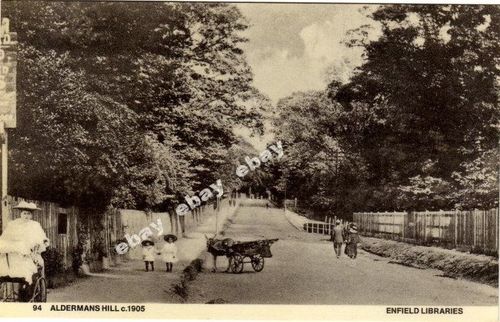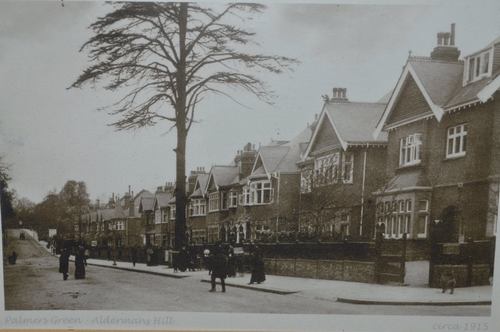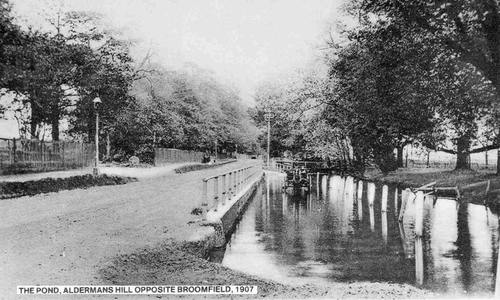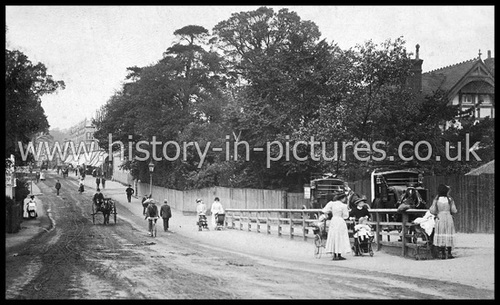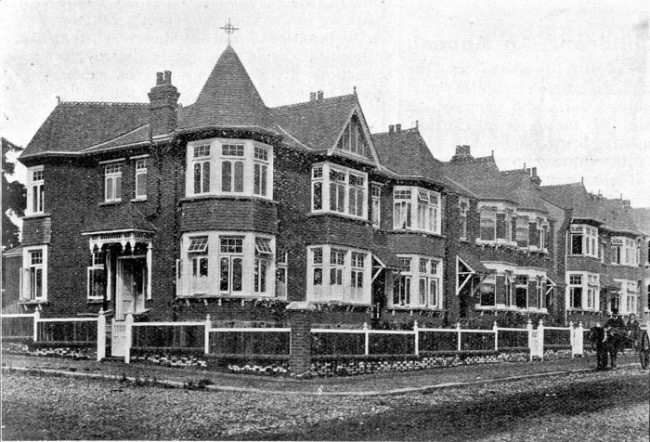Forum topic: New chance to comment on Fox Lane LTN
New chance to comment on Fox Lane LTN
09 Dec 2021 09:05 #6294- Paul Dick
Share
![]()
![]()
 Email
Email
"This visibly hasn’t happened in over a year and a half, and my post #6213 shows mathematically why even with substantial or total removal of all available short journeys to other travel can only lead to greater congestion and pollution if you do it by large areas of road closure."
I'm late to the debate. Can you explain if the other travel is walking, cycling or using escooters how this will lead to greater congestion and pollution. Mathematically you must admit removing 30 cars from a short journey and putting those 30 cars worth of passengers into a bus would reduce congestion and pollution.
Regards,
Paul.
Please Log in or Create an account to join the conversation.
New chance to comment on Fox Lane LTN
09 Dec 2021 11:52 - 03 Jan 2022 14:03 #6295- Alan Thomas
Share
![]()
![]()
 Email
Email
Alan Thomas - False
You appear to be contradicting your assertion from post #6284:
Built for very little motor traffic...
Up to now I've tried to be an LTN agnostic, as I see merits and demerits on both sides. But if siding with the pro-LTNs means aligning myself with people who want to assert that the majority of the roads in the Fox Lane LTN - built in the Twentieth Century no less - "were never designed or built for motor traffic..." then I'm afraid you've just lost a potential supporter.
This is Flat Earth Society level stuff.
Please Log in or Create an account to join the conversation.
New chance to comment on Fox Lane LTN
09 Dec 2021 15:11 - 09 Dec 2021 15:16 #6296- Adrian Day
Share
![]()
![]()
 Email
Email
Please Log in or Create an account to join the conversation.
New chance to comment on Fox Lane LTN
09 Dec 2021 16:27 - 03 Jan 2022 14:03 #6297- Alan Thomas
Share
![]()
![]()
 Email
Email
Fox Lane streets were built between 1904 and 1914. The vast majority of people walked, cycled, used horse and cart and public transport. Total car ownership in the UK was 100,000 in 1910 - today its over 39 million vehicles. So the car was the exception - as these pictures from that period show and the street designers didn't have a crystal ball. Indeed it was designed as a very low traffic neighbourhood - bliss!
You illustrate your point with photographs of the very roads I pointed out *were* indeed evolutions of muddy, bucolic country lanes. Aldermans Hill, Green Lane(s), Bourne Hill/The Bourne and Fox Lane are not the roads that were built between 1904 and 1914, and now part of the Fox Lane LTN, that we are discussing.
I insist that the majority of roads within the Fox Lane LTN *were* designed and built with motorised traffic in mind. They were built as Tarmacadam roadways with services running underneath them, with paved walkways along both sides and raised kerbs separating the two. No crystal balls necessary; the planners and developers had seen what was coming.
Yes, of course they could not imagine the huge increase in private car ownership and the level of (over) use seen a century later, but that's another point altogether. They probably never imagined the UK population would double either.
The street I live on - inside the Fox Lane LTN - never evolved from an ancient track or medieval pathway. It was built from scratch, on what had been farm land, in the Twentieth Century - the century of personal motorised transport.
Please Log in or Create an account to join the conversation.
New chance to comment on Fox Lane LTN
11 Dec 2021 10:21 - 11 Dec 2021 10:24 #6298- Adrian Day
Share
![]()
![]()
 Email
Email
Please Log in or Create an account to join the conversation.
New chance to comment on Fox Lane LTN
11 Dec 2021 11:05 - 03 Jan 2022 14:04 #6299- Alan Thomas
Share
![]()
![]()
 Email
Email
Built from scratch but not as a high traffic neighbourhood for thousands of cars to cut through every day. Which is why a low traffic neighbourhood is needed. Here’s newly built Derwent Road - with no motor vehicles and a horse and cart.
What, no cargo bicycles? No rosy-cheeked children playing hopscotch in the middle of the road? And where is Jean de Manios's Bleriot on the roof of No.75...?!
You seem to be keen to affirm something that I do not dispute. Yes, we have too many motor cars. But we also have too many people, and those people are not living simple, uncomplicated, Edwardian lives.
Personal motorised transport brought great freedom. We now need to rein it in a little (offering sensible and practical alternatives) but those who are nostalgic for empty streets and the occasional horse and cart might still be glad that they have the use of an MRI scanner when required. Even Luddites need to be pragmatic.
Please Log in or Create an account to join the conversation.
New chance to comment on Fox Lane LTN
16 Dec 2021 16:50 #6305- Peter Payne
Share
![]()
![]()
 Email
Email
In response to #6294 I’m guessing you didn’t read the post #6213 which explains exactly how removing all short journey cars to active travel or public transport will lead to more pollution, if you do it by closing large areas of roads. If you do it by persuasion or other means there would be a saving in pollution but the additional congestion, delays , longer journeys both in length and time caused by squeezing the remaining traffic onto a smaller road network leads to a net INCREASE in pollution and greenhouse gases.
To make it easier to follow I’ll put a diagrammatical post up under a new thread, “LTNs Will Increase Pollution and Greenhouse Gases”
Adrian. In response to #6292. Yes you have engaged but not countered any of the statistics I have supplied. You haven’t disproved the maths or logic so I’m guessing you cannot. If I “question every and stat supplied by full-time academics and bona fide research studies” it is because they are questionable. Have you actually read any of these papers or are you just relying on summaries and conclusions spun by various lobby groups ?
For example Rachel Aldred’s paper quoted in Richard Eason’s Bowes QN (LTN) Report on the effects of LTNs. Of her sample population nearly 30% were drawn from London Cycling Groups. This over represents the opinions of cyclists by about a factor of ten times since, in the same paper, she quotes “only 3% of the Outer London Borough population cycle 3 times a week”. In a longitudinal survey where you are relying on people to fill in a diary of walking, cycling and car activity, is this really a representative sample from a fair minded, objective statistician? As a result of this bias towards cyclists she has also hugely under represented the BAME community since her sample population were 89% white where the general population in Outer London is around 65% white. So the BAME community’s input/opinion is diluted to a third of what it should be.
In addition, her paper is littered with figures where the p value is <0.5 where statistically this makes them unreliable as they cannot rule out the Null Hypothesis, meaning they could be just random events. Despite a small percentage increase in cycling from a very low base, she had to also conclude “No evidence either way of change in car use associated with interventions”. You tend not to read these conclusions from LCC or BSfE or even from TfL who funded it.
If you only want to listen to academics then in personal communication to me from Rachel herself…
“I agree that with the figures we have re motor traffic in Waltham Forest, we can’t draw strong conclusions about impacts of the Village scheme on motor traffic flows on boundary roads.”
And when questioned about relating her survey on the LTN effect on the fire service to emergency vehicles in general…..
“London Ambulance Survey data unfortunately is not granular and spatial like the fire brigade data, so we weren’t able to use that in the same way.”
In other words they didn’t look at the effect on the Police or Ambulance service because it wasn’t easy. Or if they did they didn’t report it. These emergency services operate in a different way with “nearest responder” so don’t have the local knowledge of the Fire Brigade.
With respect to the effects of LTNs on cycling and whether they work at all Rachel says…..
“In terms of health benefits – I mainly see LTNs (if they work) as improving health by increased walking – I think this would be the main pathway.”
Note the “IF THEY WORK”
If Oliver no longer lives in Enfield how come he is still commenting on BSfE and still appears to be an administrator ?
In your belief that “ traffic flows have increased in London and Enfield over the past 30 years” you are clearly disagreeing with “full time academics and bona fide research studies” of Transport for London.
I agree that digital way finding apps will have led to an increase in traffic on some minor roads where these would largely have depended on local knowledge, but is the solution really to close all these roads and increase pollution and Greenhouse Gases as a result ? Surely a better way would be to legislate that these companies algorithms cannot show an alternative route through residential areas unless there is a substantial (20%?) saving of journey time.
You and anyone else are free to give up their car if they don’t need it. Others may be persuaded to do so also, or use the cars they have less, but you can still do this without the LTNs which are causing those that have to drive to increase pollution against their will. Road pricing might work but for a left of centre person like myself this is just an admittance that ultimately only rich people will be able to drive and those poorer people who rely on their car will have to lower their standard of living elsewhere to continue to work. There are better ways of reducing traffic, and pollution in particular.
Please Log in or Create an account to join the conversation.

